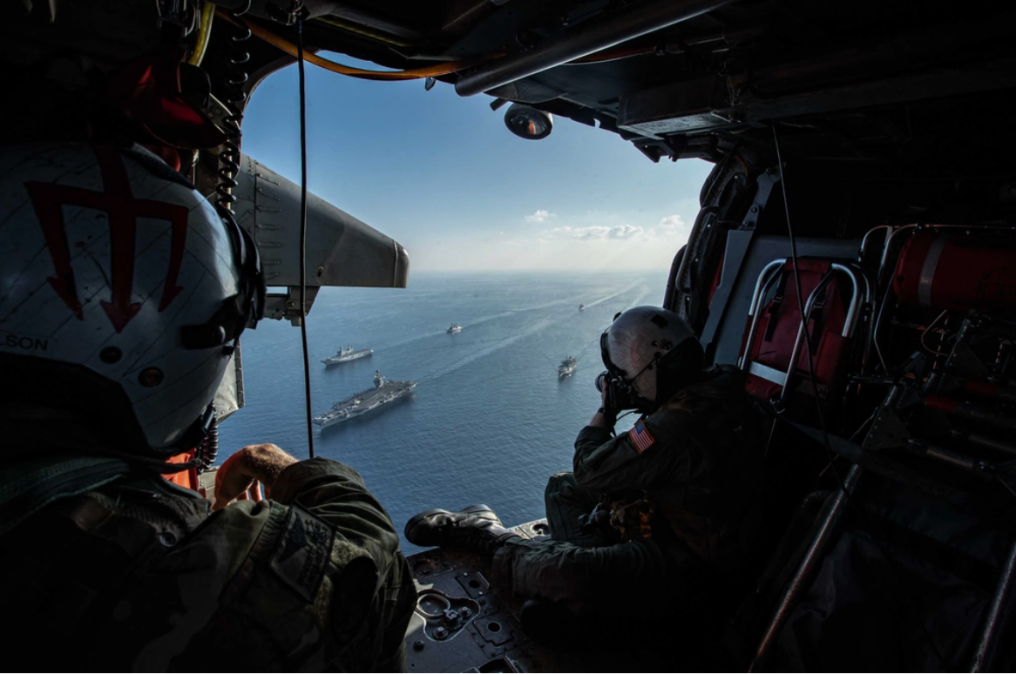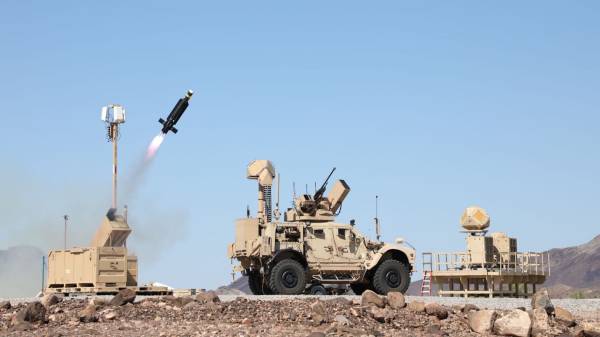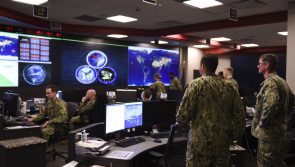More expertise may be needed for military commands to call for non-kinetic capabilities

SAN DIEGO, Calif. — In order to better integrate so-called non-kinetic capabilities into operations, more expertise may be needed within command organizations to help top leaders comprehend what their options are, according to senior Navy officials.
Non-kinetic effects, or capabilities that essentially don’t blow up or explode — such as cyber, electromagnetic spectrum or space-based tools — are often less understood than their kinetic counterparts. Commanders know what traditional types of weapons are capable of, as an exploding target can be easier to visualize than electronic warfare.
However, commanders may not always have these non-kinetic capabilities resident within their organization due to either authorities constraints or the fact they are more specialized and require unique units that might have to be assigned.
“If you don’t have the capability resident within your formation, then you have to call for fires. That’s part of the rehearsal is calling for fires. But what’s become clear to me in the world of … non-kinetic, cyber and space effects, [is] I don’t always know what those fires are or where to go to call for them or have any understanding,” Vice Adm. Michael Boyle, commander of 3rd Fleet, which has responsibility in the Pacific, said during the annual WEST conference. “We need to build the expertise within our headquarters to know what fires exist within the joint force. That’s in kinetic, non-kinetic, across joint capability and partner capability and beyond, and at any classification level.”
Boyle later noted that commanders and organizations don’t know what they don’t know, and they have to build expertise and liaisons to help educate people about the tools that are at their disposal.
“Whether it’s a carrier strike group, or a three-star headquarters or a four-star headquarters, within the planning element, they have to know what’s available, what’s the full capability,” Boyle told DefenseScoop, noting that calling for fires is nothing new within the military.
“If you’re a JTAC on the ground, a joint [terminal] air controller, who is supporting troops on the ground, you call for close air support from the sister service of the Air Force. I’m just talking about calling for close air support that may be a cyber effect, a space effect, an exquisite capability of a sister service. But I have to know that it exists,” he said.
Several years ago, the Navy created O-6 level information warfare commanders as permanent fixtures within carrier strike groups, with other pilots elsewhere in the force. The Marine Corps also created the Marine Corps Information Command at the beginning of 2023 to help integrate and explain non-kinetic capabilities and authorities across the globe.
However, Boyle said they’re stovepiped right now within the Navy, and in a future fight against a sophisticated adversary like China, the carrier strike group — the main fighting unit for the Navy in the past — might not be suitable on its own.
“I’m not saying that the carrier [strike group] doesn’t have applicability or capability. We just have to evolve in this maneuver fight. We’re no longer an island that’s being protected by our strike group. We are a maneuvering element of the fight and I want to be able to give the carrier strike commander battlespace to own,” he told DefenseScoop. “In some cases, it may be very limited because I am not authorized to push target engagement authority down to him. In other cases, I am, then he’s got to be able to plan and call for joint fires.”
Fleet Cyber Command/10th Fleet, which is the Navy’s cyber organization and cyber component to U.S. Cyber Command, is working to build some of that expertise to send around to organizations within the cyber, information and space communities.
“Our goal really there is to create expertise … I need experts, not generalists when we’re going against the kinds of adversaries that we are with the capabilities that they have. We need people that can bring that expertise to bear,” Vice Adm. Craig Clapperton, commander of Fleet Cyber Command, 10th Fleet and Navy Space Command, said during the conference.
While 10th Fleet had been the Navy’s space entity for years, this past January it officially also became Navy Space, the service’s component for U.S. Space Command. Increasingly, space and space-based capabilities are falling into the fold of information warfare within the Department of Defense, such as in the Navy and Marine Corps, including space in their cyber and information warfare commands.
As the command brings on its space personnel, for which the office of the chief of naval operations approved missions, functions and tasks that’s driving the manpower, they are seeking to build integrated firing elements to help organizations integrate non-kinetic capabilities.
“Pushing forward what I call integrated firing elements that are going to go around to the Echelon 2 and Echelon 3 staffs and then work to do exactly that. These are going to be specially trained people … There will be [warfare tactics instructors] within them, but they will also be a broader group,” Clapperton said. “Then they will rotate through these Echelon 2 and Echelon 3 staff to talk about exactly how we use space as a force multiplier for you and how we can work together to synchronize and integrate those capabilities.”
Clapperton noted that the final manpower assessment for space is not complete yet, but officials believe it could drive an increase within their staff by up to 250 people.
While the addition of Navy Space brings more responsibility to the command, Clapperton said it provides a boost when added to the other capabilities resident within the command.
“When you step back and look at it, the blending of those authorities and those capabilities, and then creating those experts in space, in cyber and information technology, and then bringing all of their skills together — it’s actually been really powerful and a force multiplier for us,” he said.






